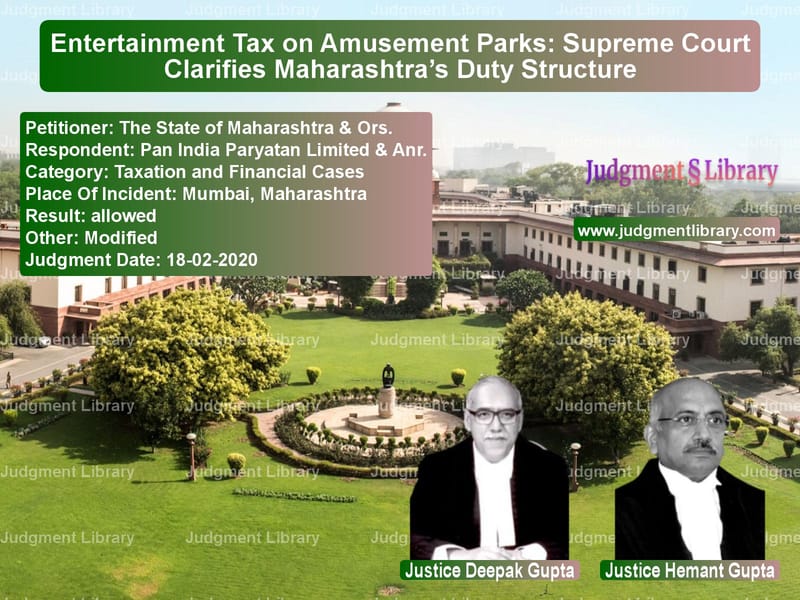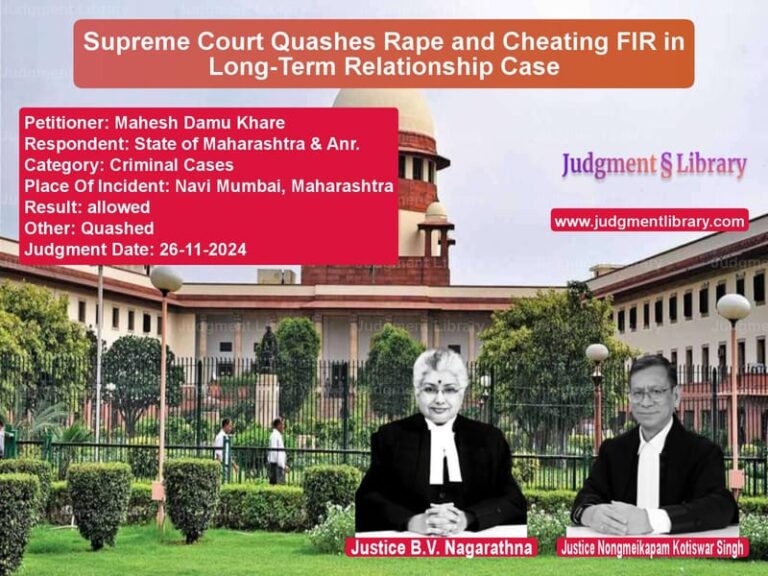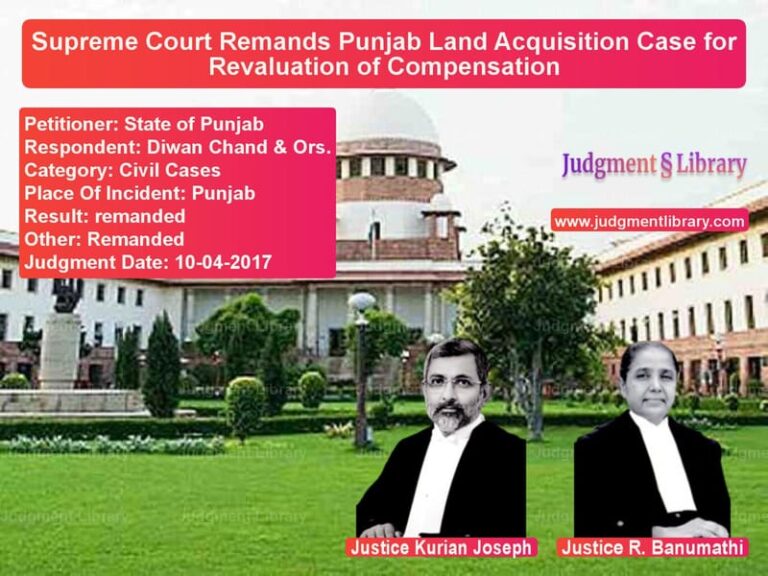Entertainment Tax on Amusement Parks: Supreme Court Clarifies Maharashtra’s Duty Structure
The Supreme Court of India, in the case of The State of Maharashtra & Ors. v. Pan India Paryatan Limited & Anr., delivered a significant ruling on the levy of entertainment duty on amusement parks under the Bombay Entertainments Duty Act, 1923. The judgment clarifies the applicable tax rates and dismisses the interpretation adopted by the Bombay High Court.
Background of the Case
The respondents, Pan India Paryatan Limited, own and operate an amusement park in Mumbai, which was opened to the public on December 25, 1989. The business model involved charging a lump sum entry fee that covered both admission and access to various rides and games within the park.
The dispute arose when the State of Maharashtra sought to levy entertainment duty on the amusement park under Section 3(1)(b) of the Bombay Entertainments Duty Act, which prescribes a 15% duty on the admission fee. The respondents, however, contended that they were entitled to a concessional rate of 3.75% under Sections 3(2) and 3(5)(a) of the Act.
Legal Issues
- What is the correct rate of entertainment duty applicable to amusement parks?
- Should the concession under Section 3(5)(a) override the standard duty rate of 15%?
- Is a lump sum payment for admission and rides covered under Section 3(2)?
Arguments by the Parties
Arguments by the Appellant (State of Maharashtra)
- Section 3(1)(b) mandates a 15% entertainment duty on admission charges for amusement parks.
- The concession under Section 3(5)(a) only applies to the first five years of operation, after which the standard rate applies.
- The respondents were incorrectly calculating duty based on Section 3(2), which applies to subscriptions, season tickets, and specific categories of payments.
Arguments by the Respondents (Pan India Paryatan Limited)
- The park should be taxed at a concessional rate of 3.75% for the first five years under Section 3(5)(a).
- Since the entry fee included multiple rides and games, it should be treated as a series of entertainments under Section 3(2), making them eligible for a 50% reduction.
- The government had earlier agreed to a lower rate but later sought to impose higher taxes retrospectively.
Supreme Court’s Observations
The Supreme Court, comprising Justices Deepak Gupta and Hemant Gupta, analyzed the legal provisions and the factual background of the case.
1. Section 3(1)(b) and the Standard Duty Rate
The Court reaffirmed that Section 3(1)(b) sets a 15% duty on admission charges for amusement parks. It noted:
“The general rate of entertainment duty applicable to amusement parks is 15%, unless a specific exemption applies.”
2. Section 3(2) Does Not Apply to Amusement Parks
The respondents argued that their business model fell under Section 3(2), which allows for a 50% reduction for payments made through subscriptions, season tickets, or series of entertainments. However, the Court disagreed:
“A lump sum payment for admission to an amusement park, which grants access to multiple rides, does not constitute a ‘series of entertainments’ within the meaning of Section 3(2).”
3. Interpretation of Section 3(5)(a)
The Court examined whether the concession under Section 3(5)(a) should apply beyond the first five years. The provision states:
- No entertainment duty is payable for the first three years.
- A 50% concession applies in the fourth and fifth years.
- From the sixth year onward, the standard rate of 15% applies.
The Court ruled that the concessional rate expires after five years, after which full duty must be paid.
4. Non-Applicability of Section 3(2) to Amusement Parks
The Court clarified that the reduced rate under Section 3(2) is meant for specific cases, such as:
- Subscriptions to a society.
- Season tickets.
- Rights to a series of entertainments spread over time.
The Court rejected the respondents’ claim that a single entry fee covering multiple rides could be treated as a series of entertainments.
Final Judgment
The Supreme Court set aside the Bombay High Court’s ruling and held:
- The correct duty rate for amusement parks is 15% under Section 3(1)(b).
- The concession under Section 3(5)(a) is time-bound and does not apply after five years.
- Section 3(2) does not apply to lump sum entry fees for amusement parks.
Key Takeaways
- Entertainment duty on amusement parks is 15%, except during the first five years when a concession applies.
- Single entry fees covering multiple rides do not qualify for reduced tax under Section 3(2).
- Judicial interpretation of tax laws must align with legislative intent and cannot expand exemptions.
Conclusion
The Supreme Court’s ruling in The State of Maharashtra & Ors. v. Pan India Paryatan Limited & Anr. clarifies the taxation framework for amusement parks in Maharashtra. By reaffirming the standard duty rate of 15% and rejecting the High Court’s expansive interpretation, the Court ensures uniform tax treatment and prevents revenue loss to the state.
Petitioner Name: The State of Maharashtra & Ors..Respondent Name: Pan India Paryatan Limited & Anr..Judgment By: Justice Deepak Gupta, Justice Hemant Gupta.Place Of Incident: Mumbai, Maharashtra.Judgment Date: 18-02-2020.
Don’t miss out on the full details! Download the complete judgment in PDF format below and gain valuable insights instantly!
Download Judgment: The State of Maharas vs Pan India Paryatan L Supreme Court of India Judgment Dated 18-02-2020.pdf
Direct Downlaod Judgment: Direct downlaod this Judgment
See all petitions in Tax Refund Disputes
See all petitions in Banking Regulations
See all petitions in Judgment by Deepak Gupta
See all petitions in Judgment by Hemant Gupta
See all petitions in allowed
See all petitions in Modified
See all petitions in supreme court of India judgments February 2020
See all petitions in 2020 judgments
See all posts in Taxation and Financial Cases Category
See all allowed petitions in Taxation and Financial Cases Category
See all Dismissed petitions in Taxation and Financial Cases Category
See all partially allowed petitions in Taxation and Financial Cases Category







